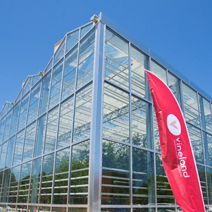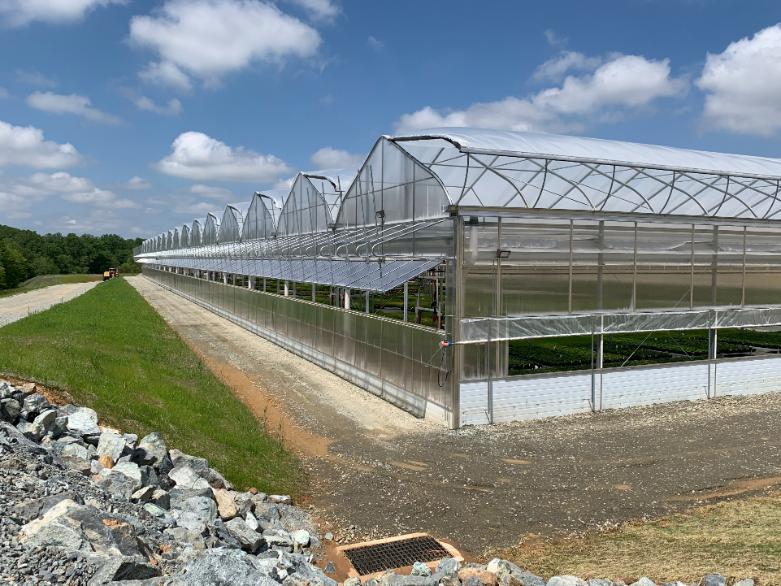Greenhouse Heating System Checklist
The unavoidable will soon be upon us; heating season! As unpleasant as it may be for all growers, winter is a fact of life and it must be considered long before the snow flies. Heating costs during the cold winter months are of prime concern for many greenhouse heating systems. Ensuring efficient operation and proper maintenance of greenhouse heating systems can significantly impact overall expenses and plant health. Therefore, it's essential for growers to carefully assess their heating needs and invest in suitable solutions to mitigate the challenges posed by winter. Here is a quick checklist to maximize the efficiency of your greenhouse heating system:
1. Pipe Insulation:
Considerable fuel is wasted each year from bare heating system pipes in areas where heat is not needed, specifically in greenhouses. Often in boiler rooms, the main pipelines from the boilers are not insulated, representing unnecessary heat loss and costing valuable energy. This directly impacts energy efficiency in greenhouses and your heating bill.
Highlight: Check the pipes in your boiler room; are they insulated? If not, you're wasting valuable heat needed in the greenhouse, not the boiler room. Insulate these pipes before the heating season to minimize energy waste and optimize greenhouse heating.
Look around your greenhouse: Where else can you find heating pipes warming up areas unnecessarily? Most growers are surprised how much heat escapes from uninsulated pipes, wasting valuable energy they could be using to maintain optimal temperatures for their plants.
By strategically insulating pipes, you can significantly improve energy efficiency in your greenhouse heating system, reduce heating costs, and create a more consistent and optimal environment for your plants, even during winter months.
2. Pump and Valve Check:
Pump and Valve Check: As temperatures dip and your greenhouse heating system kicks in, energy efficiency becomes paramount. Before leaky pumps and valves become costly issues, ensure your system is operating optimally with a pump and valve check.
Identify and Prevent Leaks: Conduct a thorough visual inspection of all valves and pumps. Hot water seeping from a pump often signifies a simple gasket issue, while leaking valves might require tightening flange bolts. Listen for unusual pump sounds that could indicate bearing wear, affecting efficiency. Remember, leaky pumps and valves represent wasted energy and money. Treat them as priority repairs to optimize winter greenhouse heating and energy efficiency.
Additional Tips:
- Regularly inspect and clean heating system components.
- Consider upgrading to more efficient equipment if feasible.
- Optimize insulation to minimize heat loss.
- Implement thermal mass strategies to retain heat naturally.
- Leverage renewable energy sources like solar power for heating (where possible).
Remember, proactive maintenance and energy-efficient practices are key to keeping your greenhouse warm in winter without breaking the bank.
3. Review Your Climate Control Settings:
As the seasons change, optimizing your climate control system for energy efficiency becomes crucial. To combat winter's challenges, take a closer look at factors like:
- Sunset Times: With earlier sunsets in winter, internal measures can compensate for sudden temperature drops.
- ️
- Boiler Efficiency: Can boiler temperatures be adjusted to eliminate constant cycling and optimize heating delivery?
- Shading Systems: Closing shading systems earlier as daylight hours decrease helps retain warmth when the sun sets.
Remember: Small adjustments can lead to significant energy savings. By reviewing your settings before winter hits, you ensure your heating system is working efficiently from the start. Even the most advanced system can be wasteful if not adapted to seasonal changes. Take control and harness the full potential of your greenhouse heating system.
4. Sensor and Gauge Testing:
- Regularly test the accuracy of gauges and sensors related to your greenhouse heating system. This helps detect and address issues promptly, preventing unnecessary energy waste.
- Compare gauge readings with corresponding sensor data to identify discrepancies. If needed, replace faulty components.
- Performing these checks before the cold season can yield significant energy savings.
5. Annual Burner and Boiler Checkup:
- Schedule a thorough cleaning and adjustment of your burners and boilers by a qualified technician annually, preferably during the warmer months.
- Proper air supply is key: too little leads to incomplete combustion, while too much allows heat to escape. Proper adjustment optimizes efficiency.
- The minimal cost of this service pales in comparison to the increased efficiency and energy savings you'll achieve during the winter.
Additional Energy-Efficiency Tips:
- Minimize heat loss:
- Use properly insulated greenhouse materials (walls, roof, etc.).
- Install double-glazed windows or coverings for additional insulation.
- Employ thermal blankets or curtains at night to trap heat.
- Seal air leaks to prevent drafts.
- Harness solar energy:
- Position your greenhouse to maximize sunlight exposure.
- Utilize thermal mass materials (water barrels, soil, rocks) to store solar heat and release it gradually.
- Consider solar water heating systems to supplement heating needs.
- Optimize ventilation:
- Implement controlled ventilation systems to manage temperature and humidity efficiently.
- Avoid excessive ventilation, especially during cold periods.
- Choose efficient heating systems:
- For larger greenhouses, explore geothermal heating or high-efficiency boilers.
- In smaller setups, consider infrared heaters or pellet stoves for targeted heating.
- Monitor and adjust as needed:
- Use a climate control system with accurate sensors and thermostats to monitor and regulate temperature and humidity.
- Regularly review and adjust settings based on weather conditions and plant needs.
Remember: Maintaining your greenhouse heating system with proactive testing and servicing is essential for peak efficiency and energy savings. By combining these measures with smart design and operational practices, you can create a sustainable and cost-effective growing environment for your plants throughout the year.
6. Keeping a Clutter-Free Boiler Room:
A cluttered boiler room or a boiler room used for storage obstructs the free circulation of air and has a detrimental effect on both proper burner combustion and the ventilation for cooling of equipment, in addition to posing a fire hazard. Obstructions placed in front of the combustion air openings restrict the free flow of air into the boiler room and may cause the burner to not get enough air for proper combustion. When this happens, it will begin to produce soot and carbon monoxide (CO). Remember, the boiler room is for the boiler and should never be used for storage.
When a boiler room becomes the storage area, routine visual examination and servicing of the equipment is in serious doubt. Boilers and their supporting machinery, controls, piping and valves need to be checked and maintained regularly. If a technician or maintenance person has to move or wade through objects it is not only dangerous but it adds valuable time to even routine maintenance which can add plenty to greenhouse maintenance bills.
Take the time on a regular basis to make sure all heating components in a boiler room are easily accessible, your pocket-book will thank you.
7. Check of Steam Valves:
Problems with steam systems are not always obvious as equipment may continue to function, although impaired. Some problems lead to premature failure of equipment, but it may not be obvious what the cause of the failure was. It is for this reason that all 2-way valves in a steam system must be checked manually on an annual basis. Valves fail due to wear, corrosion, dirt/contaminates stuck in the valve seat and under use. The only way to determine the state of the valve is to remove it from the system and determine visually if it is working properly unless it is obviously leaking. A zone valve that is stuck closed can mean that heat cannot get to that zone in the greenhouse. This unfortunately would not be evident until the zone is calling for heat. To avoid stuck or seized valves, develop a routine of manually cycling valves in the off season, this will assure the valves are in working order when they are needed. The key is to do this inspection before heat is required in your greenhouse, your crop will thank you!
An annual maintenance plan for your greenhouse heating system is very important as illustrated in this 7-point checklist, but it’s also beneficial to keep a supply of repair parts handy in case of emergencies. The best kept heating system can still have its unexpected failures and spare valves, gaskets, seals, gauges and sensors would aid in dealing with these emergencies. The extra cost of keeping an extra parts supply would pale in comparison to the peace of mind that preparation would provide.







